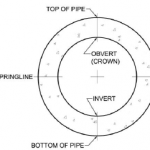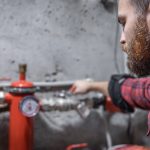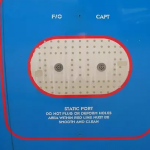Residual pressure is a concept common with water supply systems. It refers to the pressure remaining in a pipe during flow conditions. This contrasts with static pressure, which is the pressure in a pipe when there is no flow.
In this article, you will learn how to measure residual pressure, the factors that affect it, its formula, and applications in industry.
Measuring Static and Residual Pressure
The concepts of static and residual pressure are often put in the same light when discussing water supply systems. Using a fire hydrant system as a case study helps illustrate the difference between these two measurements.
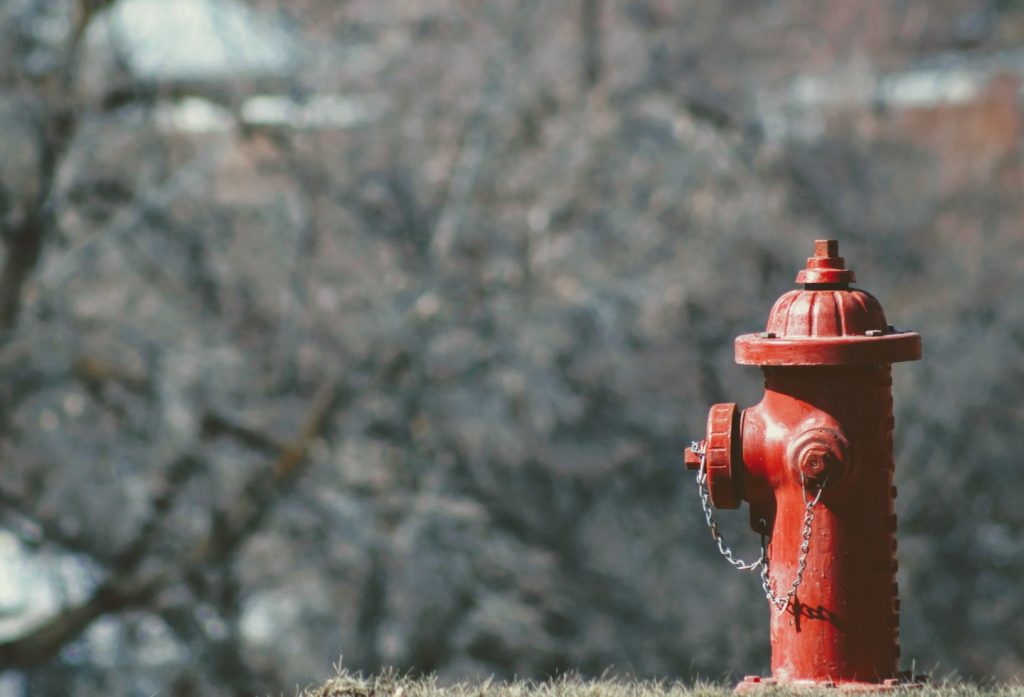
Imagine one takes the pressure measurement of the hydrant closest to the property while the one second closest hydrant to the property is flowing. This pressure measurement is the residual pressure. On the contrary, if both hydrants are not flowing, the measurement is the static pressure. In any event, the static pressure is always higher than the residual pressure.
Determination of Residual Pressure
The factors that affect the residual pressure in a pipe vary according to the application. However, the common factors in most systems include elevation, friction, pipe size, and number/size of flow outlets.
Elevation
The elevation of a water supply source greatly affects its residual pressure. When flow is running against gravity it does work, leading to pressure losses. As a result, it is desirable to have supply sources significantly higher than their destination.
Friction
Friction provides another important element when dealing with residual pressure. As water flows in a pipe, there are pressure losses due to friction between water molecules and the pipe walls. Therefore, the longer the travel distance of the flow, the more the pressure losses. Because of this, the internal surfaces of a pipeline are made smooth to minimize these losses along the way.
Pipe Size
If a pipe size is too small, it is susceptible to clogging. As a result, the volume of water passing through the pipe reduces despite the pressure of the supply. This makes the internal diameter of a pipe an important design parameter in maintaining the target residual pressure of a system.
Number and Size of Outlets
The number of outlets from a pipe system, and the size of nozzles of these outlets both affect the fluid flowrate. In turn, this flowrate has a significant influence on the residual pressure in the pipe. The residual pressure formula highlights this relationship.
Residual Pressure Formula
For a given flow system, the residual pressure (Pres) in psi, is a function of the static pressure (Pstat) in psi, the flowrate (Q) in gpm, and a constant (K) that indicates flow capacity.
![]()
The constant K is unique to each flow system and carrying out a flow test determines it.
To be more intricate, engineers account for the residual pressure in a flow system using the law of conservation of energy. Moreover, on the basis of this concept, the equation that shows the pressure relationship of flow from one point in a system to another is Bernoulli’s equation. For water flow, which is incompressible, this equation relates the residual pressure upstream (P1), the flow velocity upstream (v1), and upstream elevation (z1), to their downstream equivalents. In addition, the Bernoulli’s equation accounts for head losses due to friction (hf) and minor losses due to pipe fittings (hm).
![]()
Applications in Industry
The concept of residual pressure is important in practice. Also, it has application in both liquid and gas flow systems.
Fire Protection Hydrant System
Firefighting requires a certain level of flowrate depending on building material type, building design, and size as per state or national firefighting regulations. Additionally, the fire-fighters must maintain a minimum residual pressure as they make use of fire hydrants. The water supply system design needs to incorporate these firewater flow requirements together with domestic flow demands.
Thus, engineers must provide a robust system that caters to downstream needs. Knowing this, flow engineers relate the maximum allowable fire-fighting flow rate (QF), the total flow rate during testing (QT), the maximum allowable pressure drop to the residual pressure (hr), and the pressure drop during testing (ht) as follows:
![]()
It is important to note that the residual pressure in question for this application is that at the end of the hydrant network.
Residual Pressure Valves
The use of residual pressure valves for gas cylinders is a common practice in industry. Moreover, engineers design these valves to retain a small positive pressure usually between 1 to 5 bar even if left open for several years. It achieves this via a cartridge that stores the pressure. Thus, it helps prevent back contamination, as the entry point into the cylinder remains at a higher pressure than the atmospheric pressure. Consequently, this design avoids internal corrosion of the cylinder and associated costs of internal cylinder maintenance.
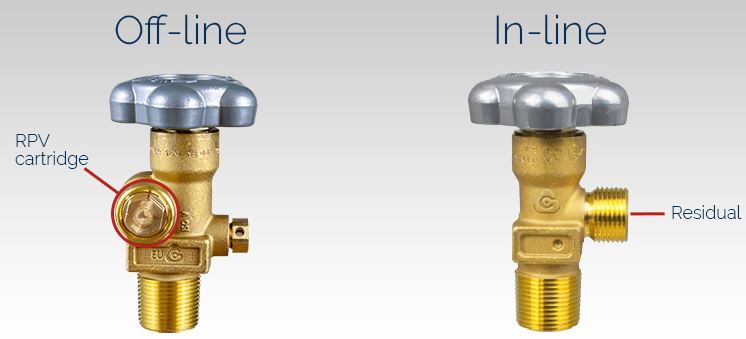
Domestic Water Supply
Pumping stations in cities set the mains pressure to meet the highest demands, which are elevated installations such as high-rise buildings. As a result, the residual pressure in the supply line is significantly higher than what domestic plumbing systems of lesser capacity can handle.
Thus, plumbers install pressure reducing valves between the mains supply and the household plumbing system. Therefore, the residual pressure can be maintained on the mains to satisfy varying plumbing requirements.

